Death Valley worker has seen some of Earth’s highest, lowest temps
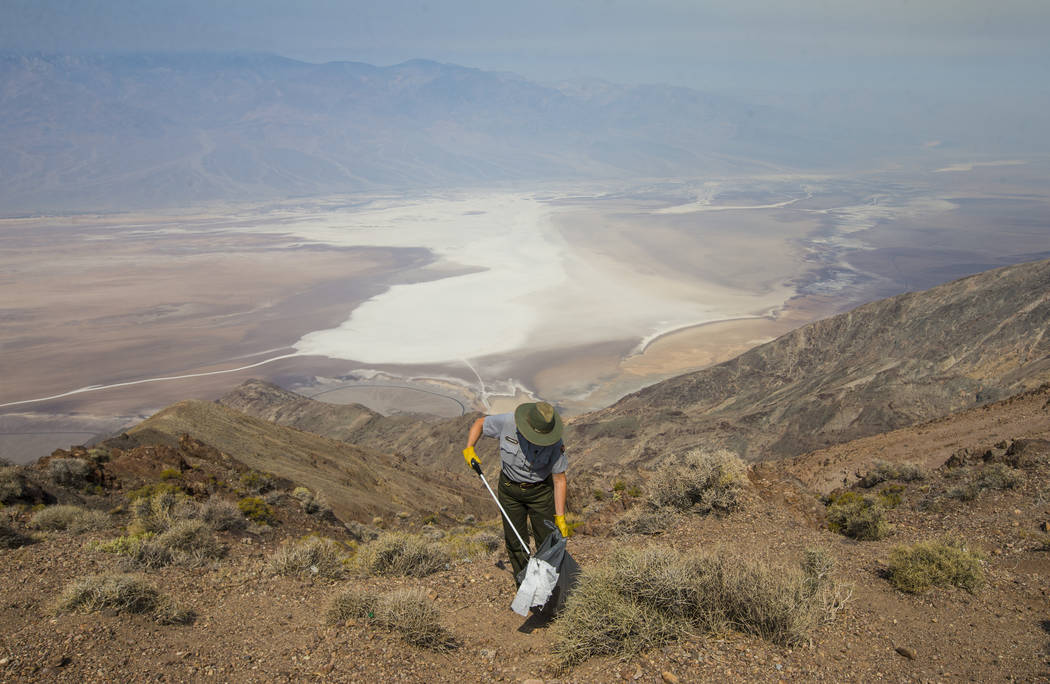


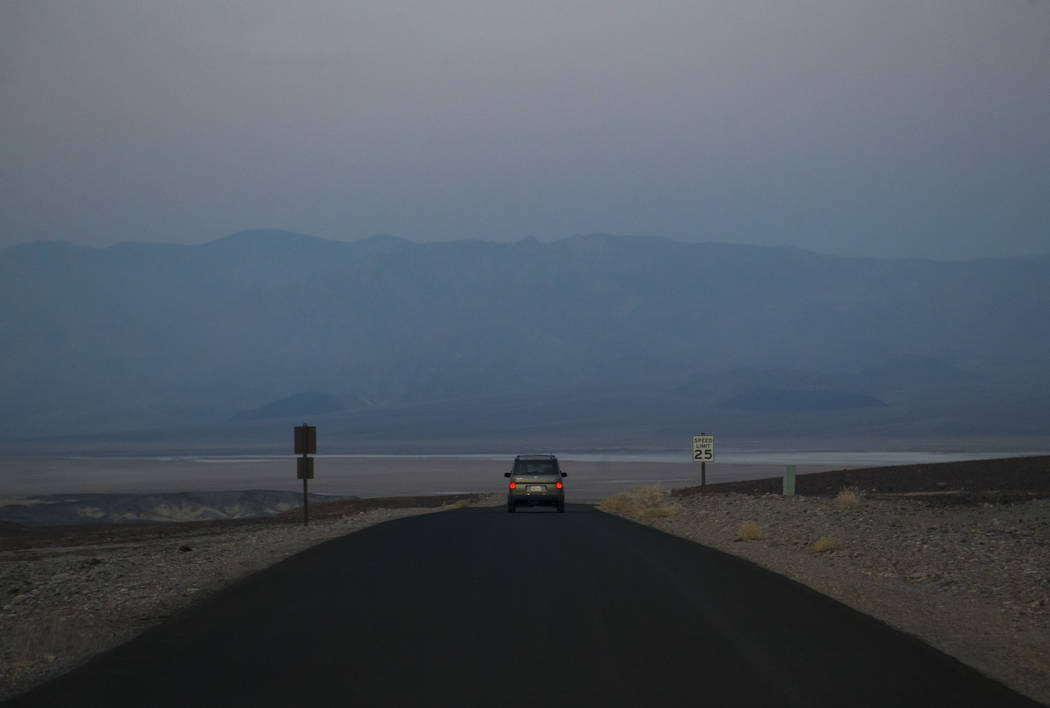

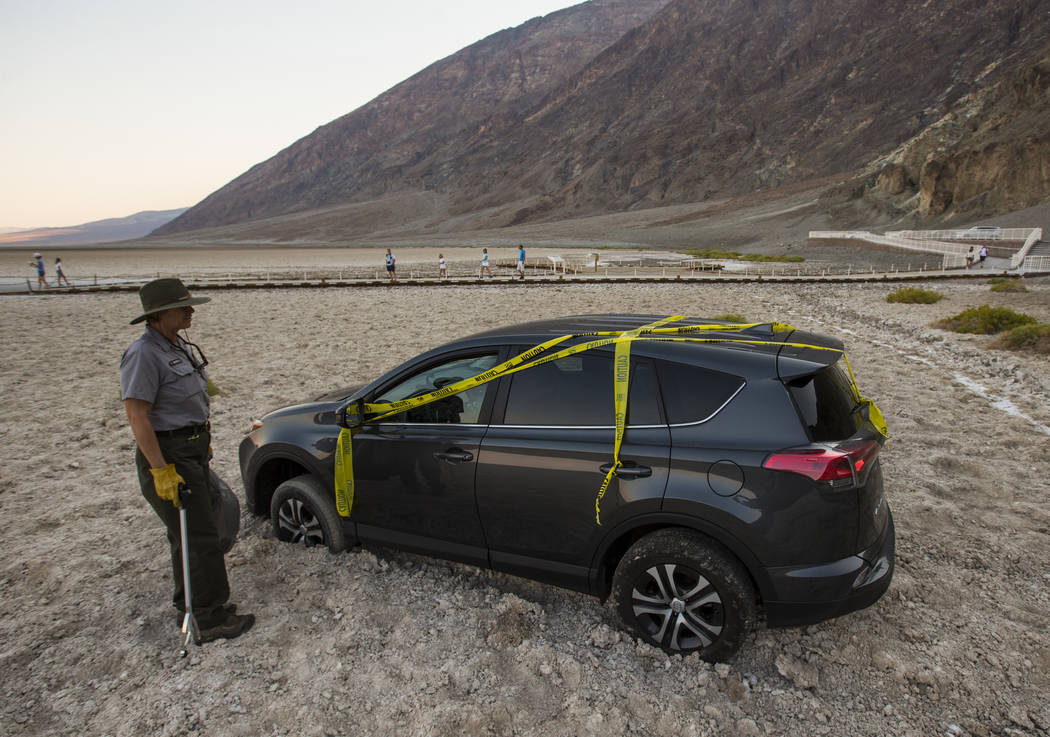

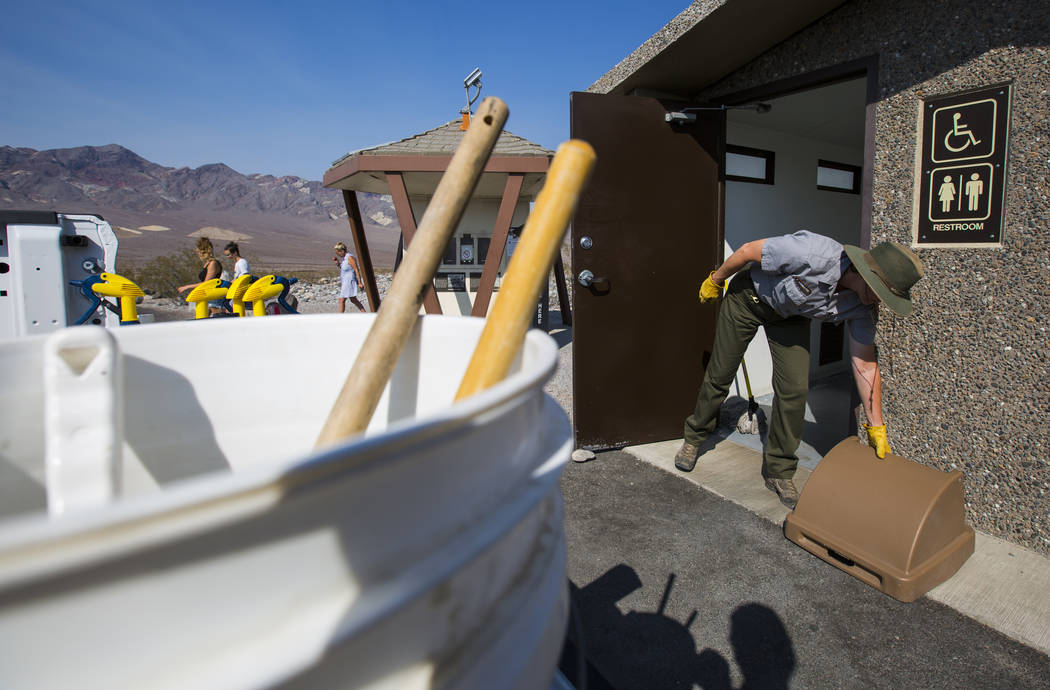
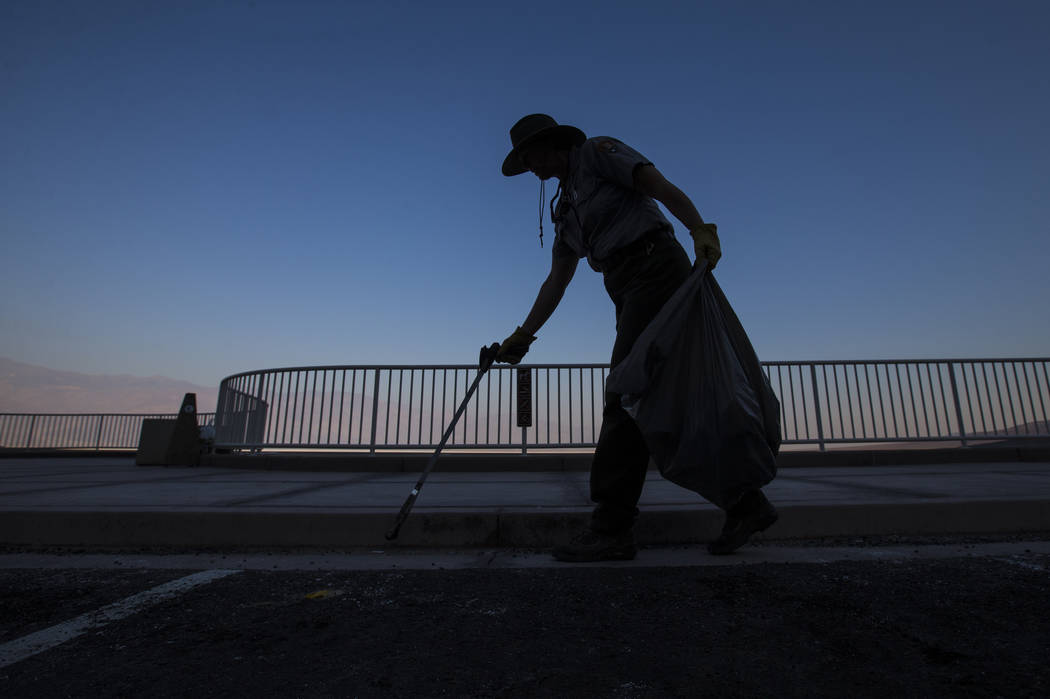
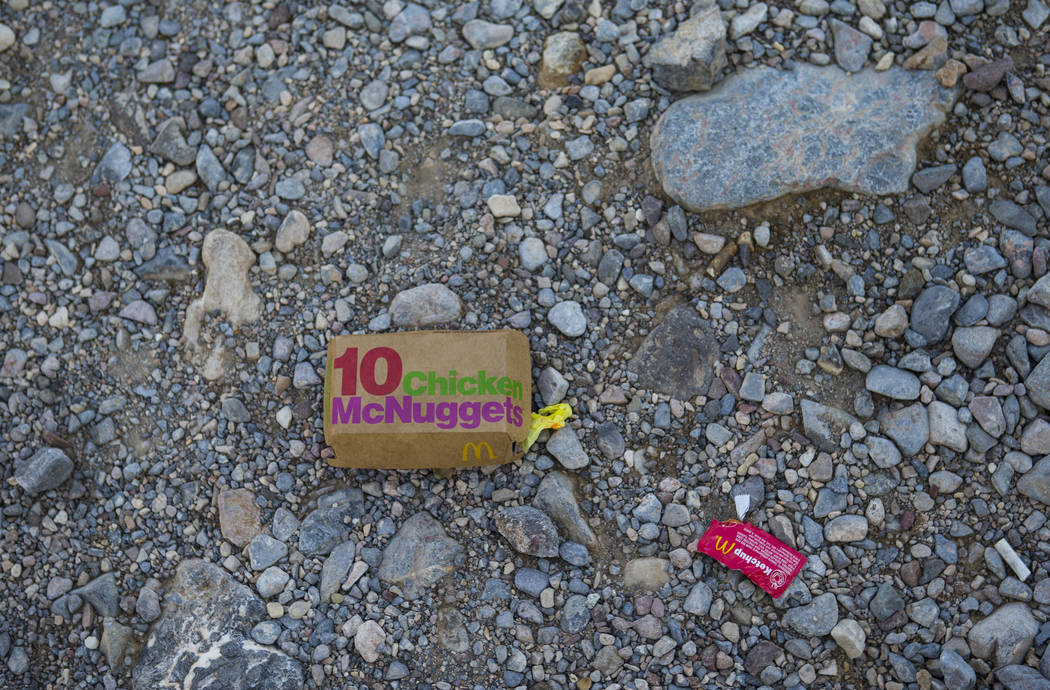
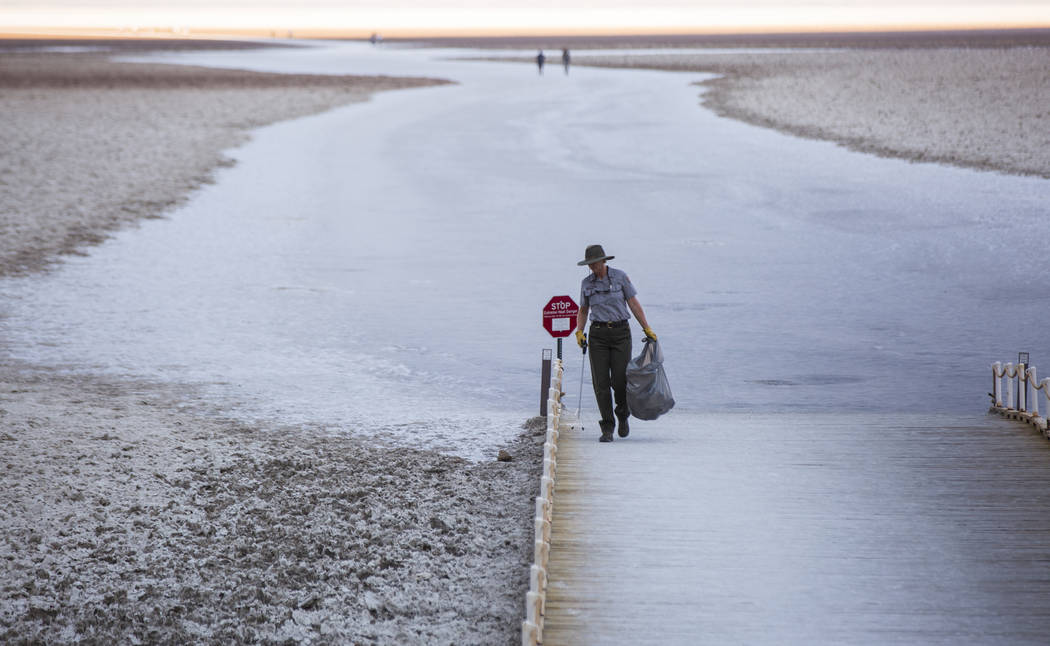
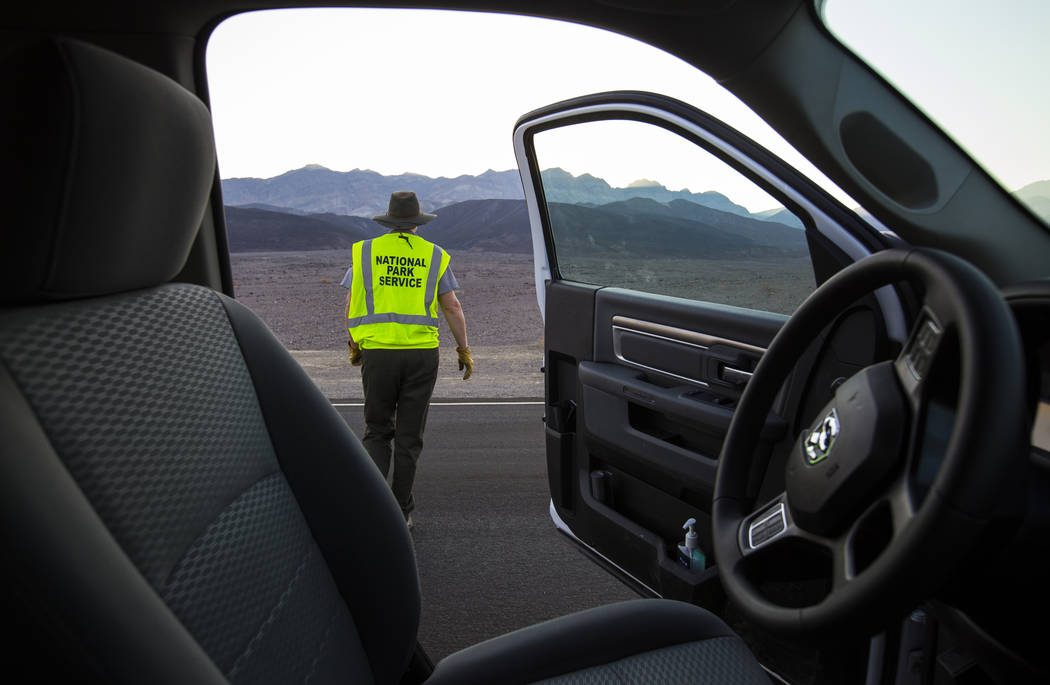
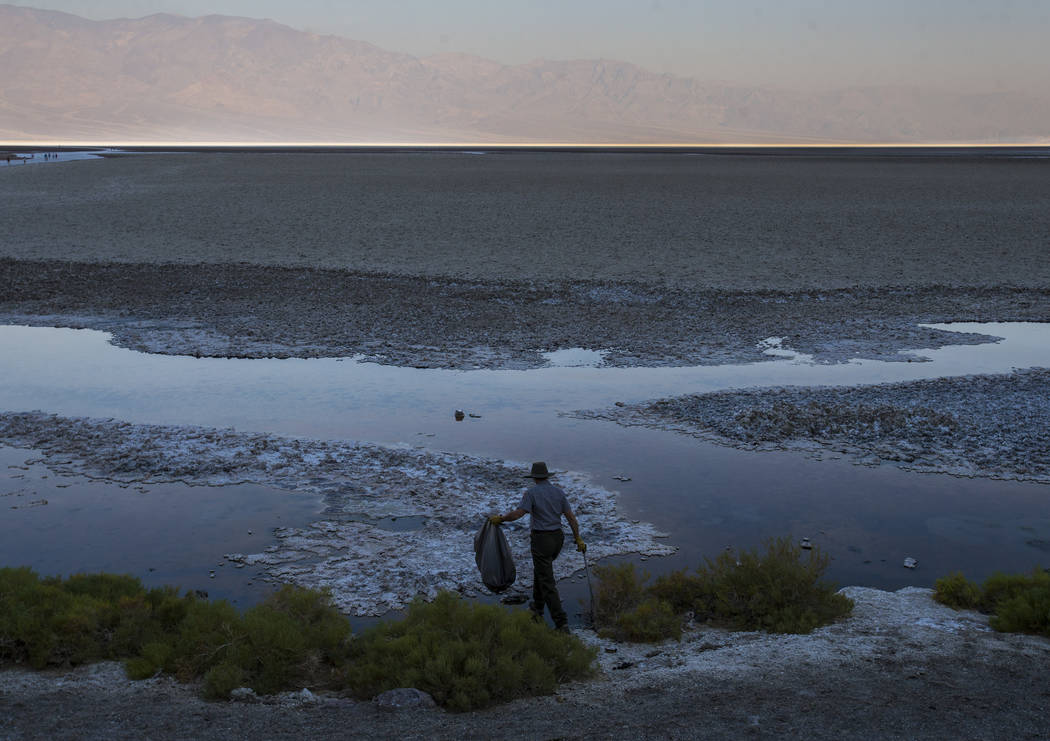

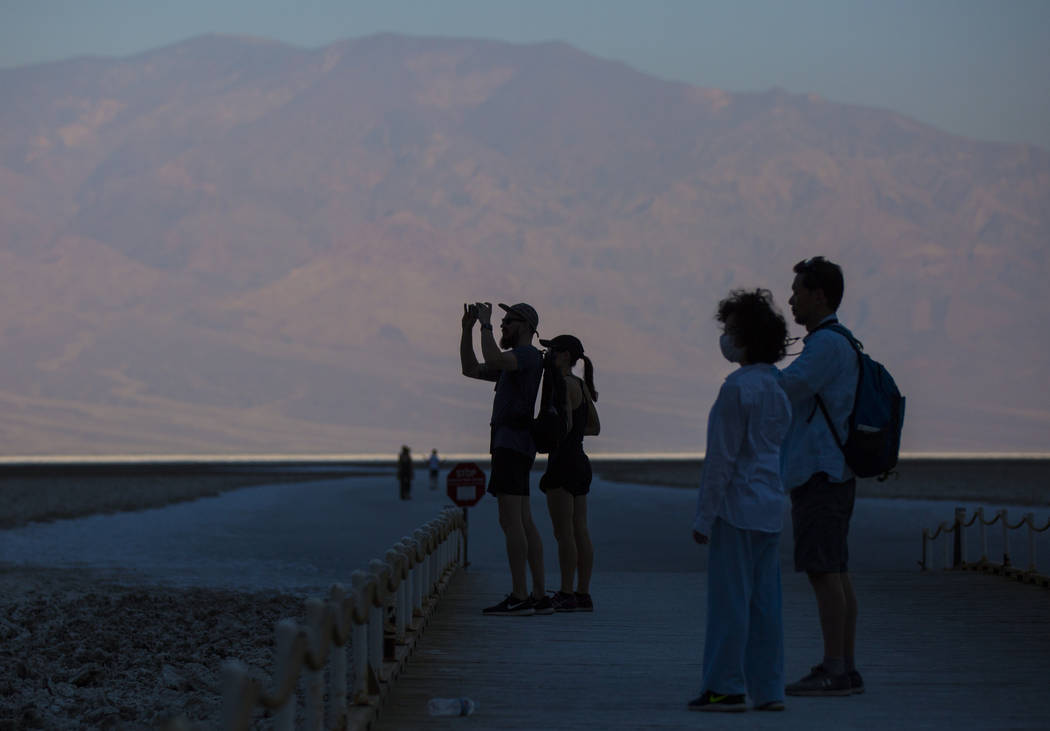
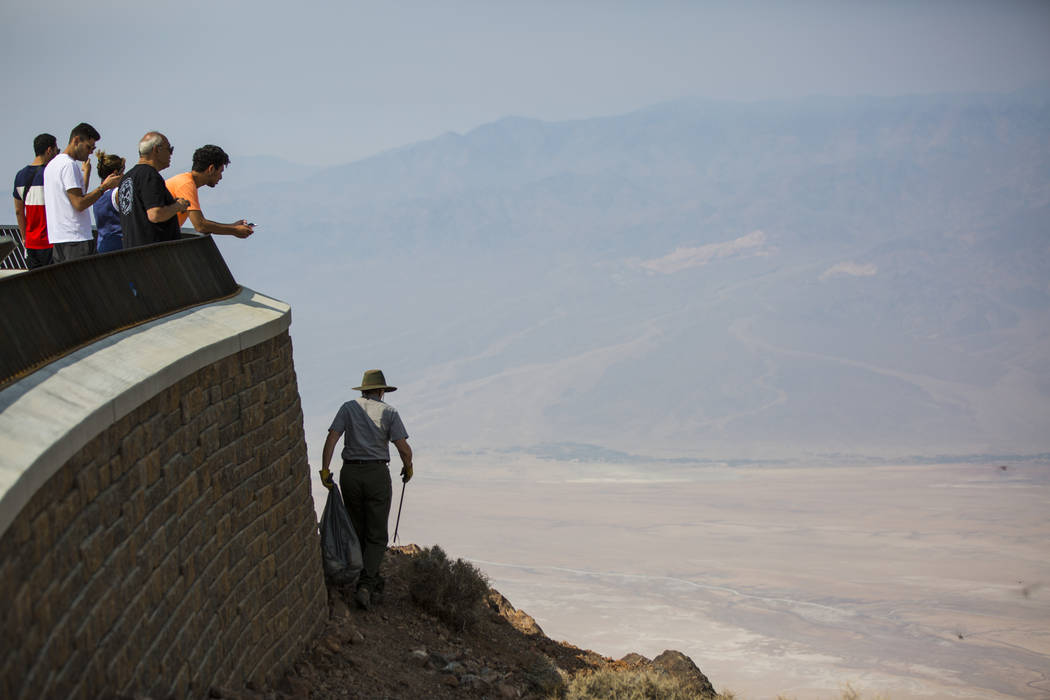
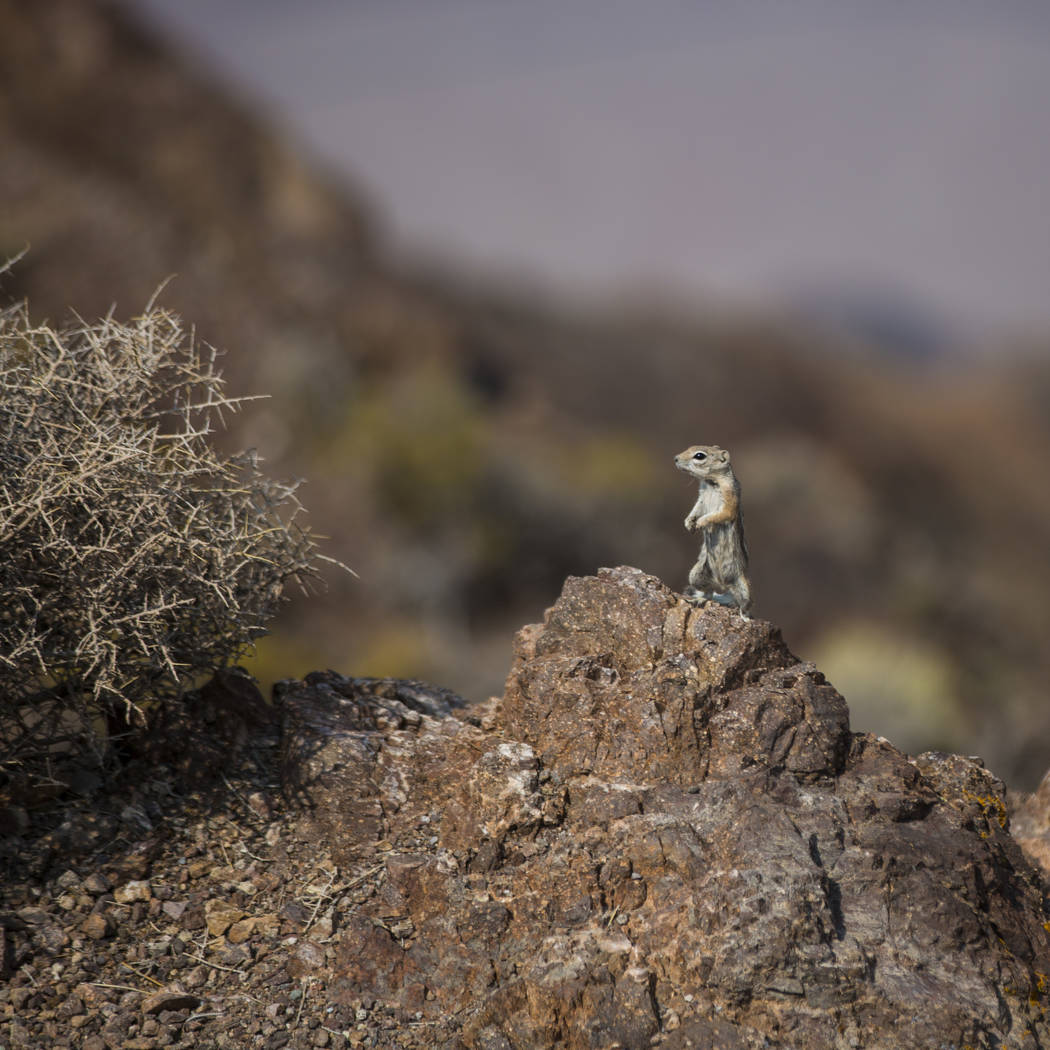




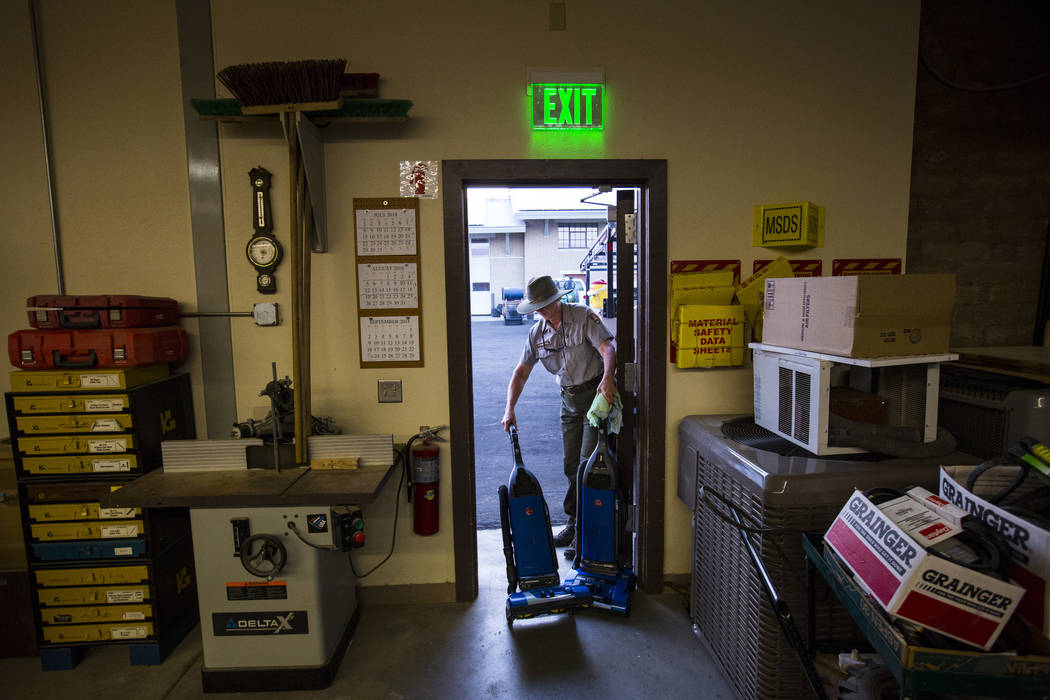

Thousands of tourists descend on Death Valley each summer to experience one of the world’s most extreme places at its most extreme.
Compared to Terry Eddington, these people are amateurs.
The National Park Service custodian is about halfway through her first summer in Death Valley, and she has already lived and worked through a July that may go down as the hottest month ever recorded anywhere on Earth.
Before that, Eddington spent five winters in Antarctica — three of them at the South Pole — where the temperature dropped to minus 103.
“That’s not why I came to Death Valley, to go from one extreme to the other. It just sort of happened,” the 56-year-old said. “Sometimes I wonder how I get myself into these situations.”
Eddington is one of about two dozen maintenance workers whose jobs require them to work outside in one of the world’s hottest places.
Four days a week, she loops through the southern half of Death Valley National Park, 100 miles west of Las Vegas, emptying trash cans, cleaning toilets, collecting litter and interacting with the public.
She carries a 40-ounce water bottle wherever she goes, filling and emptying it from a larger cooler in the cab of her maintenance truck as many as six times a shift.
She supplements it with powdered electrolytes or Gatorade. She sweats so much that she rarely needs to use the restrooms she cleans.
If she stands outside in the sun chatting with a visitor for more than a few minutes, the brass key ring hanging from her belt will get too hot to touch.
She can’t wear latex gloves because they’re too thin to protect her hands from the metal handle on the broom she carries in the bed of her truck. “I have to wear actual leather gloves like potholders,” she said.
The bottom of the world
Eddington was born and raised in Southern California. She landed her first park job in 1985 at Kings Canyon National Park, where she waited tables for a private restaurant operator.
She spent the next decade in seasonal positions, mostly at Yellowstone National Park, before finding work as a rural carrier for the postal service.
When she got bored with that, she joined the support staff at a science station in Antarctica, a job that required her to pass a psychological evaluation.
She would end up spending two summers and five winters on the southern continent between 2005 and 2014.
“Winter in Antarctica is basically nine months of darkness with no support from the outside world,” she said. “The last plane leaves around Valentine’s Day, and flights don’t start back up until around Halloween.”
For three of those winters, she lived and worked at the National Science Foundation’s 80,000 square-foot Amundsen-Scott South Pole Station. For two of those winters, she ran the station’s hydroponic vegetable garden, harvesting more than 400 pounds of produce in a single month from the frozen desert at the bottom of the world.
After her last tour at the South Pole, she worked briefly at Colorado National Monument, then took a support job inside the Arctic Circle at a natural gas production facility on the North Slope of Alaska.
She spent the past two winters working seasonal park service jobs in Death Valley “because I was kind of done with cold,” she said.
She was hired on permanently by the park earlier this year.
Eddington said she never experienced cabin fever in Antarctica or Alaska like she has this summer in Death Valley. When she’s not at work, she said, she feels trapped at home, under the air conditioner.
She said she’s lucky to have one of the park’s newer, government-owned houses, but it isn’t perfect. Anytime she turns on a tap, the water comes out at 102 degrees and never gets any cooler.
“There is no taking a cold shower for me after work,” she said.
Cracked eggs, dead birds
Eddington wakes at about 4 a.m. to put on her green and gray park service uniform, pack a lunch and gather her gear. At 5:45, she leaves the Cow Creek staff housing area to attend a 6 a.m. briefing with the rest of the maintenance staff.
Then she climbs into her park service pickup and hits the road by about 6:15 a.m., before the sun emerges from behind the Funeral Mountains.
Her roughly 90-mile route takes her to Golden Canyon, Artists Palette, Zabriskie Point and Dante’s View.
On this day, she begins with a quick stop at the Furnace Creek visitor center, where she drops off a pair of vacuum cleaners. Then she continues south to Badwater to clean the restrooms and fill a 55-gallon bag with trash dropped by tourists at the lowest point in North America.
This time of year, she finds yellow stains baked on the sidewalks and the pavement where visitors have cracked eggs to watch them cook.
“Now it becomes illegal food for wildlife and a big fat mess for me,” Eddington said. “I see egg shells everywhere all the time.”
She also regularly finds the remains of birds that were drawn to Badwater’s false promise of relief only to be overcome by the heat.
Today’s victim is a mallard. She stashes the dead duck in the bushes to decompose naturally next to the briny sump.
She’s back on the road before 8 a.m. Between stops, she pulls over occasionally to collect beer cans, Mylar balloons and other garbage from the side of the highway.
Eddington said she has noticed a change in the way people behave in national parks. There’s more litter and less respect for the rules.
“Some people are going to care, and some people aren’t. It’s discouraging to see the mess they make sometimes,” she said. “It really does concern me with all these budget cuts and staff cuts. We can’t keep up, and visitation is increasing.”
Hottest month anywhere
Eddington tries to finish the bulk of her outdoor work by noon to avoid the hottest part of the day, but there is no escaping the heat during the worst of it.
July was like nothing she had ever experienced.
There were 21 days when the daytime high reached at least 120 degrees, and 10 days when the overnight low never fell below 100. During one stretch late in the month, the temperature hit 127 four days in a row.
The average temperature for July — 108.1 degrees, including the highs and lows — now ranks as the hottest month ever measured in the Western Hemisphere and probably the world.
“It was a little like opening up the oven and breathing in that hot air,” she said. “Your face just turns red from the sun beating on you.”
On the worst days, when the temperature would hit 115 by 9 a.m., even minor tasks like coiling the hose on the pressure washer would sap Eddington’s strength.
She would work for 10 minutes and then cool down for 20 minutes in the air-conditioned cab of her truck.
“I kind of avoided picking up litter” along the roads, she said. “Sometimes it was hard for me to walk to my car at the end of day.”
This Tuesday in early August is delightful by comparison. It’s barely 90 degrees when she leaves for work, and by 8 a.m. the temperature has only climbed to 104.
“This is pleasant,” Eddington said, looking at the truck’s dashboard temperature display. “This is just so pleasant.”
It wouldn’t stay that way.
By about 1 p.m., as she makes one last pass through the mostly deserted Furnace Creek campground, the heat reverberates from the pavement, stinging the skin on her ears, even under her flat-brimmed hat.
Death Valley’s official high for the day would top out at 121, but at the visitor center, tourists are posing for photos in front of a digital display that reads 123 at 2:30 p.m.
Eddington said she planned to spend the rest of her shift indoors and the rest of her day at home, with the thermostat cranked down to 75.
She’s given it a lot of thought, she said. She’d rather be cold.
Contact Henry Brean at hbrean@reviewjournal.com or 702-383-0350. Follow @RefriedBrean on Twitter.
Extreme employee
Death Valley custodian Terry Eddington has lived through some of the most extreme weather Earth can dish out. Before she started working at the national park 100 miles west of Las Vegas, she spent five winters in Antarctica, including three stationed at the South Pole. Her experiences include:
-103 degrees
The coldest temperature recorded during her time at Amundsen-Scott South Pole Station.
127 degrees
The hottest temperature she has worked in so far in Death Valley.
230
The difference in the two temperature extremes Eddington has experienced while on the job.













